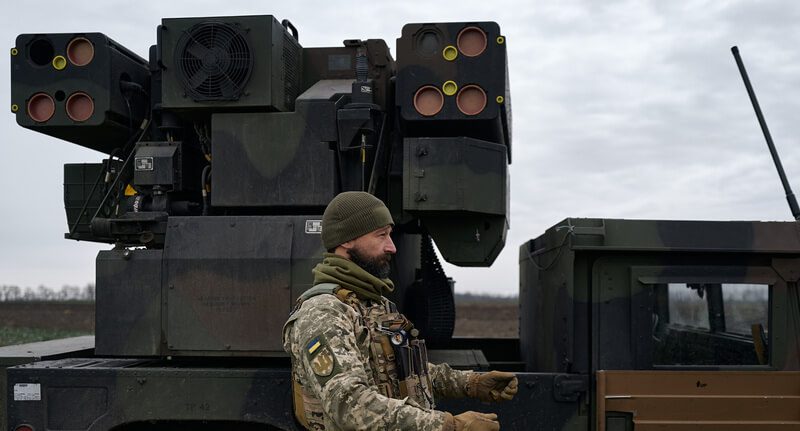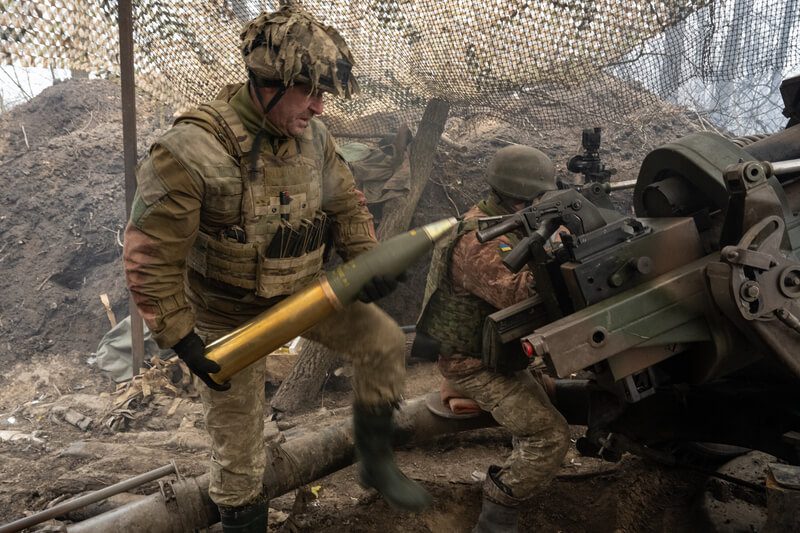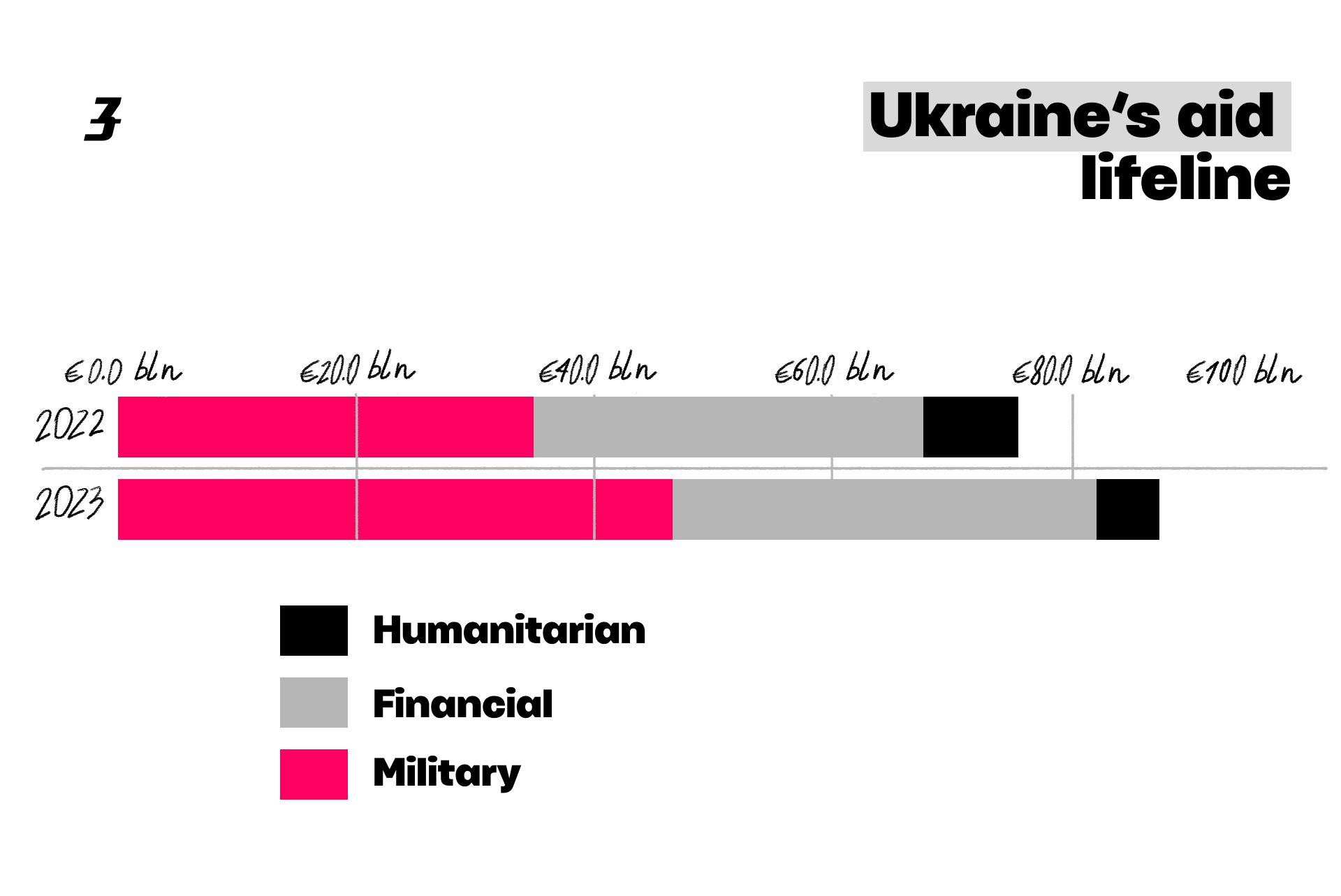What the Ukrainian Armed Forces Will Get, How It Will Change the War, and Why Packages Alone Are Not Enough: The Most Detailed Analysis of the Consequences of U.S. Aid

The long-awaited military aid from the United States will be the largest for Ukraine since the full-scale invasion of Russia. The delivery of weapons has just begun, and Russian propagandists are already threatening to turn the United States into “radioactive ash.” However, the West does not believe that the package will dramatically change the situation. Zaborona’s regular author Andriy Sorokin tried to understand the predictions and assessments of foreign politicians, media and think tanks.
American weapons: what is included in the 2024 package
The aid includes, among other things, ammunition for artillery, air defense systems, armored vehicles, and long-range ATACMS missiles. We should not expect miracles in the form of a decisive victory, but some progress is expected:
- Ukraine will strengthen its air defense, thereby protecting troops and civilians;
- The Ukrainian Armed Forces will be able to respond more effectively to attacks by the Russian army — there will be enough shells for a long time;
- military supplies will help stop or slow down the advance of Russian troops;
- ATACMS will allow strikes on the military infrastructure of the occupied regions, destroying Russian logistics inside Ukraine;
Ukraine will be able to maintain its defense, replenish units, and gain time: Kyiv is expected to receive new weapons (at least 13 more F-16 fighters) by the end of the year, and the U.S. and EU will increase ammunition production.
Most analysts doubt that this will change the situation dramatically. But now the Ukrainian Armed Forces will be able to at least stabilize the front line, says retired U.S. Marine Corps Colonel Mark Cancian. “You will see an almost immediate effect on the battlefield,” he promises.
Franz-Stephan Gady, an analyst at the Center for a New American Security, believes that Ukraine will end up in a situation reminiscent of November 2023 — the Ukrainian army will not have to choose one object or area to defend again in the presence of numerous threats from the air.
Experts at the German Kiel Institute predict that by the end of 2024, Western support will return to the level of early 2023. Therefore, the new U.S. aid package will provide the Ukrainian Armed Forces with only a temporary respite, says Christoph Trebesch, an expert at the Institute.

A Ukrainian soldier who gave the name Ruslan loads the gun, as soldiers of the Ukraine Army’s 95th Brigade fire 105mm artillery shells from a British-made L119 howitzer at Russian positions in the Lyman direction on February 18, 2024 in an undisclosed location, Ukraine. Photo by Scott Peterson/Getty Images
Arms do not offset the problem of personnel shortage
Western analysts emphasize that the U.S. aid package is by no means a panacea for all the problems faced by the Ukrainian army. Firstly, this concerns the shortage of personnel. Some experts admit that the resumption of arms supplies will indirectly affect the situation. For example, Stephen Sestanovich, a senior fellow at the Council on Foreign Relations, believes that men of the conscription age will now be less likely to evade mobilization, and political and military leaders will be able to increase their credibility. However, lowering the draft age from 27 to 25 seems to be a more effective measure to replenish the reserves. But even this is not so simple:
- Ukraine needs to conduct mass conscription on a regular basis to ensure rotation on the front line. The government’s reluctance to make unpopular decisions and conduct rounds of mobilization has led to the exhaustion of forces, says Max Bergmann, director of the Europe, Russia, and Eurasia program at the Washington-based Center for Strategic and International Studies.
- The mass mobilization means serious political risks for President Volodymyr Zelensky, The Washington Post writes. According to the source in the Verkhovna Rada, the authorities are already forced to underestimate losses, although the situation is not an emergency and a balance can be found.
- The conscription and training of soldiers will take more than a month in any case. The West could simplify this task a bit if it sent its instructors directly to Ukraine. In this case, the military would not have to travel to other countries for training, said Max Boot, a senior fellow at the Council on Foreign Relations.
- In any case, Russia will have an advantage in manpower, especially given its indifference to losses.
Counteroffensive or blind defense
The ability to manage military aid from the U.S. and EU is also assessed differently. Becca Wasser, a senior fellow at the Center for a New American Security’s defense program, argues that the Ukrainian leadership will have to make a choice: break the deadlock and launch a counteroffensive, spending resources quickly, or focus on holding their ground. In her opinion, the best solution is to carefully consider options for using American and European support.
Nick Reynolds, a researcher at the RUSI think tank, also states that the government has a difficult task: it needs to understand what part of the aid should be used for urgent needs and what part should be postponed until 2025.
Another issue is how best to spend the money. For example, retired U.S. Navy Rear Admiral Mark Montgomery calls the Patriot missile system too expensive for a limited budget. In his opinion, the FrankenSAM hybrid air defense systems, which allow the launching of American missiles from Soviet-made systems, might be a more logical solution.
Arms race
The arms race is another factor that determines the outcome of a war. According to NATO intelligence, the Russian Federation produces 3 million shells annually. At the same time, Western countries can supply Ukraine with only 1.2 million shells per year. In addition, Russia can receive weapons from Iran and North Korea, and its budget allocates 6% of GDP for military spending. The aforementioned Max Boot reminds us that Ukraine is preparing to launch the production of its own artillery ammunition, but this process does not promise to be quick.

Infographic: Kateryna Kruhlyk / Zaborona
But the saddest thing is that the situation with the supply of weapons and ammunition remains unstable. A number of military experts advise using the current aid package as if it were the last.
Carnegie Endowment for International Peace expert Jennifer Kavanagh noted that the debate over support for Ukraine is becoming more heated and taking longer. Democrats are worried that Trump’s return to the White House will only make it more difficult to support Ukraine. The expected strengthening of the Republicans is even more worrisome: there are still enough of them who vote against allocating aid to Kyiv. Although some of them are confident that they will be able to convince Trump to increase it.
But in any case, the Ukrainian leadership is advised to keep an eye on the situation in Washington when planning military action.
More than aid packages
Arms supplies are not the only thing Ukraine needs to turn the tide. Analysts agree that Western countries could do more to help Kyiv win the war against Moscow.
Increase defense production. There is still little the EU can do to compensate for the possible lack of U.S. assistance, writes the previously mentioned Max Bergmann. According to his estimates, Europe does not have enough stocks, and its own production is still insufficient to support Ukraine. Europeans have less than a year to ensure its survival, Bergmann believes.
Confiscate Russian assets in favor of Ukraine. The U.S. House of Representatives passed a bill in April 2024. European lawmakers are in no hurry to follow their example. This decision is not an easy one: it involves enormous risks, particularly for the global financial system.
Revise the energy strategy. First and foremost, this concerns the United States, according to Stephen Blank, senior fellow at the Institute for Foreign Policy Studies, and Peter Huessy, president of the Geo-Strategic Analysis consulting firm. In an article for Real Clear Defense, they advise Washington to do at least the following
a) stop condemning Ukraine’s attacks on Russian refineries (oil and gas account for two-thirds of the Russian government’s revenue);
b) reduce the energy dependence of Europe (including Moldova and the Balkans) on Russia;
c) increase its own oil and gas production to prevent further economic erosion of the United States — with lower energy prices, inflation will be lower, and it will be easier to support Ukraine.
Difficulties with the adoption of the bill on financing Ukraine
For more than six months, Democrats and Republicans had been trying to agree on military support for Ukraine. Meanwhile, the Russian army continued to advance, causing the mood in Kyiv to grow increasingly gloomy. At the end of March, President Volodymyr Zelensky said that without American help, the Ukrainian army would have to retreat further.
In mid-April, CIA Director William Burns said that if Congress did not approve it now, Ukraine could be defeated by the end of the year. Fortunately, the lawmakers listened to his words. Therefore, the actions of the United States are perceived as a message — at least that they do not stop supporting Ukraine. But this is not the only interpretation.
The United States needs a new approach to supporting Ukraine, says Chatham House expert Olga Tokariuk. She reminds that the aid package was approved only after the realization that Ukraine was on the verge of collapse. “The United States, Europe, and other allies of Ukraine should develop a long-term strategy that will ensure a continuous flow of Western military aid, regardless of election cycles. This can be achieved by legally enshrining a commitment to fund Ukraine in the long term. The bilateral security agreements signed by Ukraine with six EU countries and the United Kingdom make this possible. Several more such agreements will be signed in the near future, including one with the United States,” writes Olga Tokariuk.

Infographic: Kateryna Kruhlyk / Zaborona. Source: Reuters
American arms supplies to Kyiv are a clear signal to Europe. This is the opinion of Robin Quinville, a former diplomat and senior official at the U.S. State Department, director of the Wilson Center’s Global Europe Program. According to her, Washington is making it clear that it is ready to share the burden of supporting Ukraine with the EU. This is important because: a) European aid primarily complements U.S. funding; b) Europeans have begun to doubt that they can count on the United States for their defense.
U.S. and UK assistance to Ukraine should inspire others to do more. This was stated by Estonian Prime Minister Kaja Kallas, who is known for her unconditional support of Kyiv. “We must not forget that we have resources and experience — our strength is superior to Russia’s. […] But we all still have a long way to go, and we don’t have the luxury of time. Russian imperialism poses a threat to the whole of Europe, so it is important that our allies also understand this,” she said in an interview with The Telegraph.
The awareness of politicians about what is happening in this war is of great importance. For example, House Speaker Mike Johnson risked his position to push through a bill to help foreign countries, including Ukraine. Immediately after Russia’s full-scale invasion, the Republican supported Kyiv but later became skeptical about such support. He had previously voted against the relevant appropriations. Mike Johnson changed his mind after reviewing intelligence and evidence of Russian crimes, The New York Times reports. He also advised his fellow party members to attend the same briefings from the special services to form an adequate picture of what is happening.
The United States should change its strategy of informing the public about this war, said Suzanne Loftus, an expert at the Kennan Institute (specializing in post-Soviet countries). The difficulties with the adoption of the bill on financing Ukraine are a clear confirmation of this. Otherwise, the country will be forced to capitulate, which will create a lot of problems for Europe. “In addition, it is important to emphasize that providing Ukraine with the necessary weapons is a direct investment in the American defense industry. It does not have a negative impact on the economic well-being of an average American,” notes Suzanne Loftus.
War in 2024: what’s next
In recent months, the Russian-Ukrainian confrontation has usually been described using two terms: “deadlock” and “stalemate”. The EU High Representative for Foreign Affairs and Security Policy, Josep Borrell, characterized it as a “dynamic stalemate.” But now there is a way out of it.
Stephen Sestanovich, a senior fellow at the Council on Foreign Relations, predicts that the parties will be trying to change the situation throughout 2024. “By the third anniversary of Putin’s invasion, there is a very real chance that one side will win, and the other will lose. Western politicians need to take these possible consequences into account and act accordingly,” the expert believes. Andrew Michta, an analyst at the Atlantic Council, shares a similar opinion: “Depending on what happens in the next few months, the conflict could move into uncharted territory.”
The optimistic scenario for the Ukrainian Armed Forces is that the Russian army will be exhausted this year and Ukraine will launch a successful counteroffensive the next. This will finally provide a turning point, writes Max Bergmann of the Center for Strategic and International Studies. But even in its absence, Ukraine needs to be strong militarily to ensure a strong position in possible negotiations with Russia.
Some Western politicians and diplomats continue to urge Ukraine to start negotiating with Russia. The problem is that the latter’s leadership is in no hurry to abandon its maximalist goals in this war, as the Institute for War Studies recognizes. At the same time, think tanks are increasingly writing that it is time to start an equally important discussion. Namely, to discuss a realistic vision of the future beyond the thesis that “Russia must not win and Ukraine must not lose.”
The upcoming NATO summit could be an ideal platform for such a conversation. If NATO members commit to support Ukraine more, it will be much more important for Ukraine than another debate about its membership in the Alliance. Ultimately, this makes sense for NATO countries themselves, if only for pragmatic reasons. After all, the cost of Kyiv’s defeat in this war could be much higher for them.







